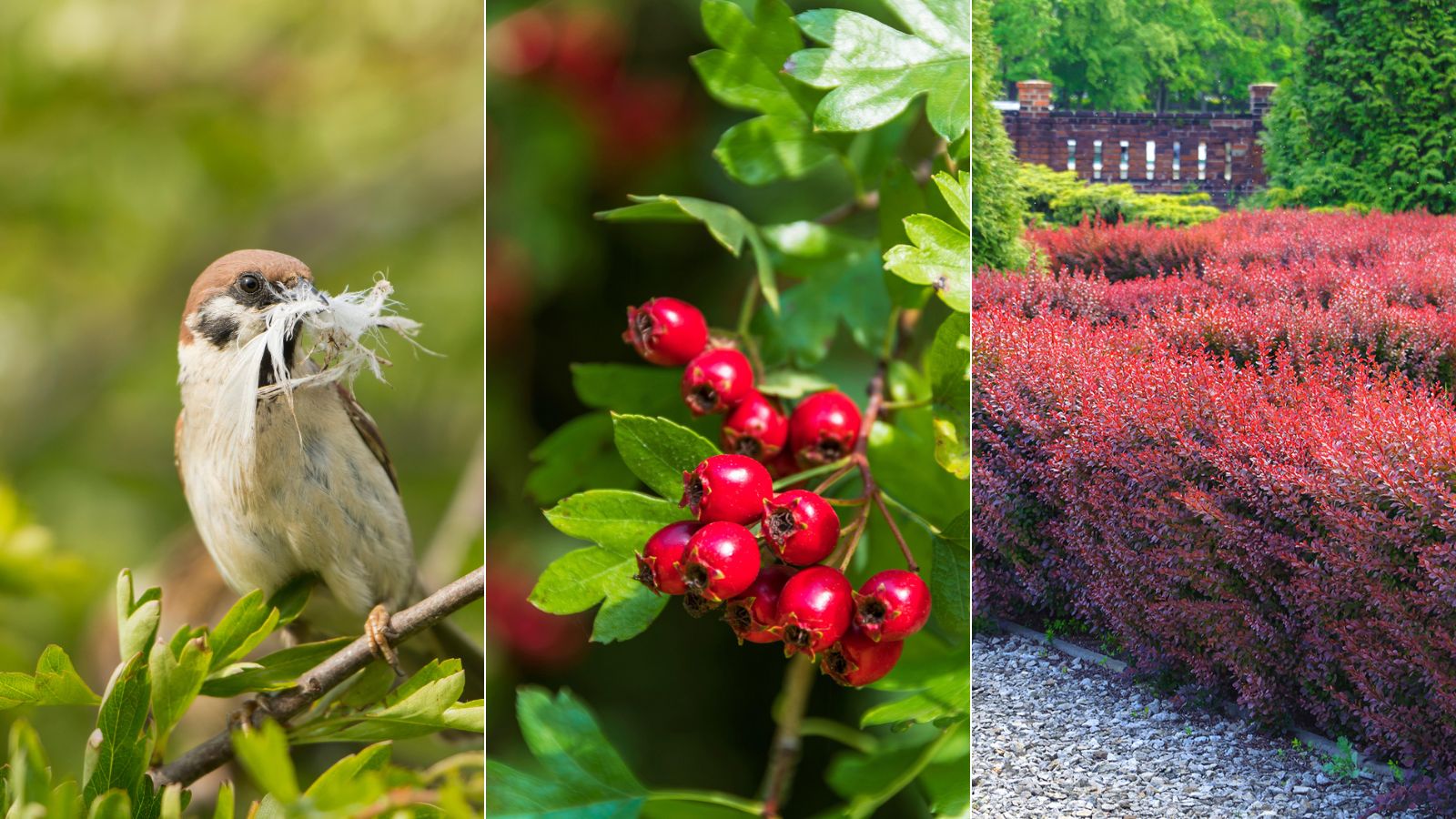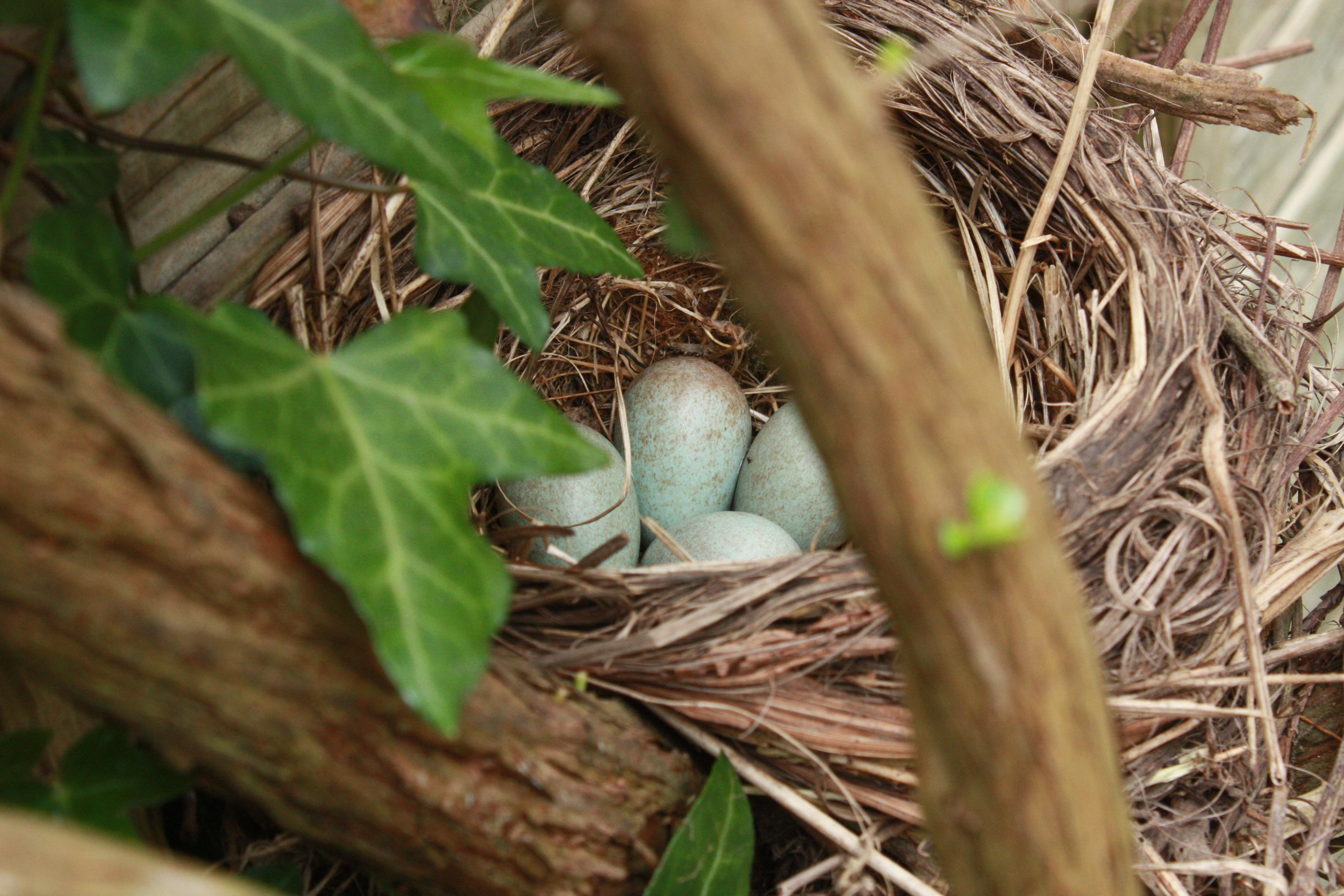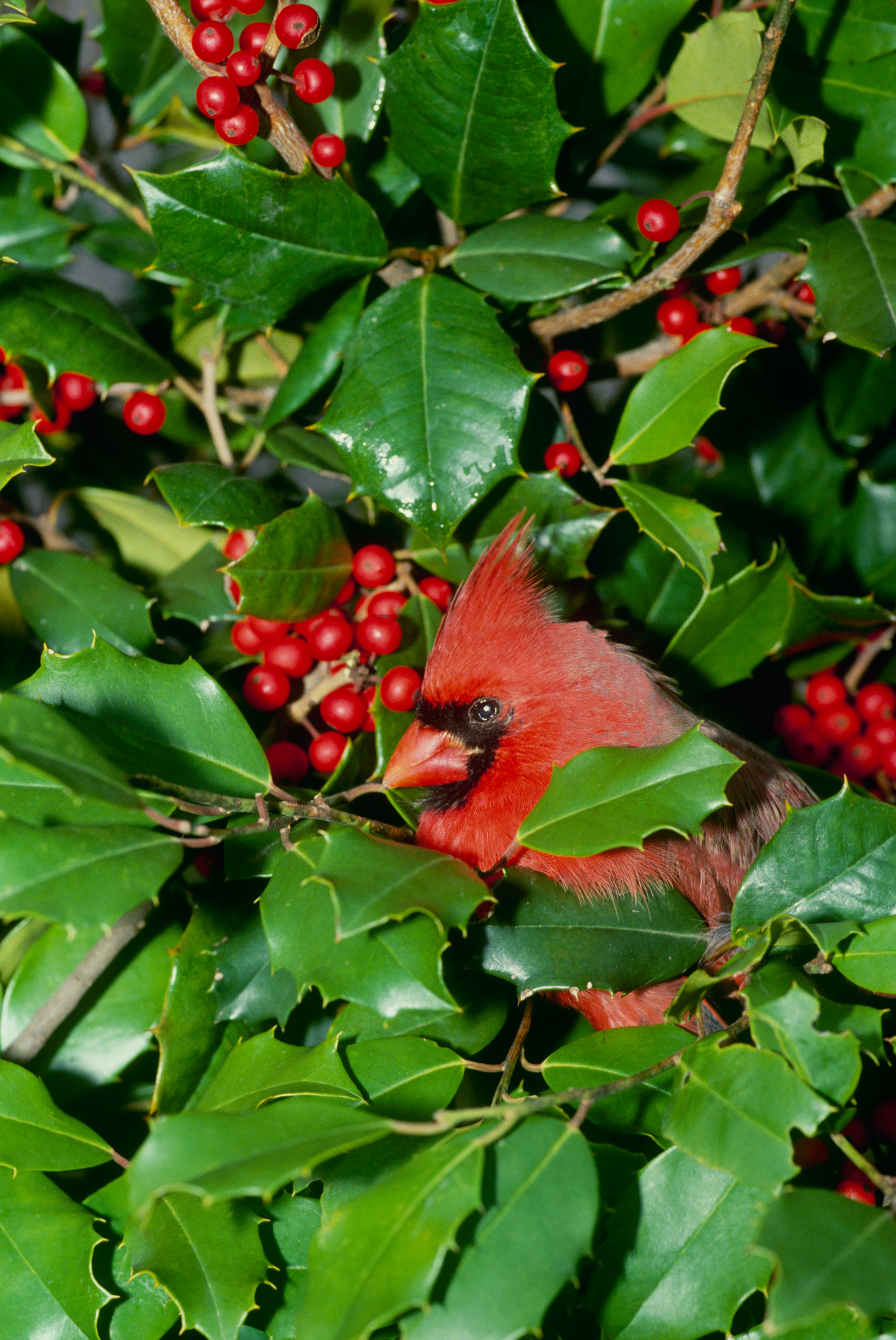Planting a hedge for wildlife – that provides privacy and structure, too
Learn how to plant a wildlife hedge for a more sustainable and wildlife-friendly backyard


If you are trying to make your backyard more eco-friendly, planting a hedge for wildlife is one of the simplest yet most effective things you can do.
An invaluable addition to wildlife garden ideas, planting a hedge will give birds and other visiting insects and animals a valuable source of food and habitat.
'When wanting to embrace sustainable garden ideas, plant hedges for your boundaries over fences every time. Hedges are good for wildlife, and the environment, too. They provide a habitat and absorb pollution. Use mixed wildlife hedging in rural areas and dense evergreens in the urban environment,' advises H&G's garden expert Leigh Clapp.

Leigh Clapp is a professional photographer with over 25 years experience, primarily as a garden specialist photojournalist. She delights in exploring gardens, discovering the tiny elements to their overall essence and meeting lots of enthusiastic gardeners along the way. Leigh’s work appears in magazines, newspapers and books, including Feng Shui Garden Design, Vertical Gardens and From the Garden, all available on Amazon.
How to plant a hedge for wildlife
Some of the best fast-growing hedges and best fragrant hedges are also great for wildlife. What's more, you can combine planting for wildlife with defining the shape and structure of your backyard's boundaries by planting privacy hedges, too. Garden fence ideas, on the other hand, whether wooden or metal, limit wildlife highways, preventing animals from traveling from yard to yard. While you can install wildlife-friendly baseboards, these only offer a limited improvement. So, instead, learn how to plant a wildlife hedge to provide valuable food, habitat, and security for birds and other wildlife.
1. Plant hedges for wildlife at the right time
Hedges are best planted in spring or fall when the ground isn’t frozen, dry or waterlogged. Plant bare root and root-balled varieties as soon as they arrive or heel in (like when planting roses) until ready to plant. Cell-grown and potted hedge plants can be left a little longer but need to be kept watered and be planted before they outgrow their pots.
2. Choose the right mix of species
A mix of deciduous and evergreens is best but avoid mixing too many species – two to three is best, planted informally so they all mingle together as they grow.
3. Mark the hedge line
Mark the hedge line using sand and decide whether to use a single or double row. A single row will be cheaper to grow but a double row provides greater impact and privacy.
Design expertise in your inbox – from inspiring decorating ideas and beautiful celebrity homes to practical gardening advice and shopping round-ups.
4. Plant the hedges
‘Cultivate the soil to 12in (30cm) deep, let it settle or tread firm and use three plants per yard (meter) for a single row and six-eight for a double,’ recommends horticulturalist and author Anne Swithinbank – her latest books are available on Amazon.
If no rain is forecast, water in.

Picking the perfect placement for a wildlife hedge
The main role of a hedge of any kind is to provide privacy. This will dictate the size and location of your hedge and will also guide your other garden privacy ideas.
'Plant a hedge at least 3ft away from the boundary on your land. This will help to avoid potential problems with neighbors and, if they trim the hedge to your boundary line, the main stems won’t be damaged. Do allow space for trimming on your side, too – don’t fill borders right up to the hedge or you’ll trample over the plants in front when you need to trim it,' explains garden expert Leigh Clapp.
Urban vs. rural hedges
When it comes to selecting the best hedges for wildlife, it is important to consider where you live.
You need to choose plants that will thrive in your backyard’s soil. A failing hedge will not only look unpleasant but will be of little benefit to wildlife.
‘Urban backyards are often more prone to wet or waterlogged soils, with water running off hard surfaces. Alder (Alnus glutinosa) and Willow (Salix capraea) are well worth considering for wet soils prone to being waterlogged. Urban soils are generally not as naturally balanced so it will help to use topsoil and fertilizer to give your plants the best chance of establishing,’ explains Jamie Shipley, managing director at Hedges Direct. ‘Rural areas are generally more affected by drought and dry soils. Brachyglottis could be used to add a splash of yellow to drought-prone gardens, while Berberis hedge plants can add a wide spectrum of color to a garden in need of drought-tolerant hedging.’
It is also a good idea to combine two or three varieties. Ensure you combine fast-growing hedge plants, which will fill out your hedge and provide privacy, alongside other hedging plants that produce berries and habitat for birds and wildlife.

Planting different hedge forms
When it comes to establishing your hedge there are several options: pot grown; cell grown; root-balled and bare-root. Pot and cell grown are more affordable and easier to plant but will require patience to establish while root-balled and bare root will provide instant coverage but are more costly.
The practicalities of planting your hedge for wildlife will depend on the option you choose. ‘For pot-grown and cell-grown plants, your trench needs to be about twice as wide as the pots or root structures. Root-balled and bare-root plants will need a trench twice as wide as the root structure. For pot-grown plants, plant them at the same depth as they were in the pot, or in the case of bare root and root balled plants, plant to the damp line on the main stem where you can see they were previously planted in the fields. Cell-grown needs an inch of soil over the top of the roots,’ explains Jamie Shipley at Hedges Direct.
Why are hedges good for wildlife?
Unlike fences, hedges provide shelter, protection, and food for wildlife. Once established, a hedge can offer the perfect location for birds to build their nests and raise their young, especially if you include a thorny plant as this will offer additional protection from predators.

What hedge is best for wildlife?
‘Consider native hedging to recreate the local ecosystem within your area as much as possible. Species-rich, mixed hedging will encourage greater biodiversity and support different types of wildlife. Choosing a wildlife-friendly hedge with spiky foliage, such as Blackthorn or Holly, provides a bushy habitat that keeps food sources and nests safe from predators, such as cats or other larger birds.
'Planting these hedges around the base of a bird table or hanging feeder can also protect unsuspecting birds as they eat,’ advises Jamie Shipley at Hedges Direct. ‘Also be sure to incorporate a plant with berries to feed the birds and flowering hedging plants such as Dog Rose and Bird Cherry which have flowers that attract bees and butterflies.’

Is a hedge better than a fence?
Yes, a hedge is better than a fence. A hedge provides greater security – it is harder to climb a spiky hedge than it is to climb a fence. Hedging offers more benefits to wildlife – providing food, habitat and security. Opt for flowering and evergreen varieties and a hedge will be more aesthetically pleasing than a fence.

Having graduated with a first class degree in English Literature, Holly started her career as a features writer and sub-editor at Period Living magazine, Homes & Gardens' sister title. Working on Period Living brought with it insight into the complexities of owning and caring for period homes, from interior decorating through to choosing the right windows and the challenges of extending. This has led to a passion for traditional interiors, particularly the country-look. Writing for the Homes & Gardens website as a content editor, alongside regular features for Period Living and Country Homes & Interiors magazines, has enabled her to broaden her writing to incorporate her interests in gardening, wildlife and nature.